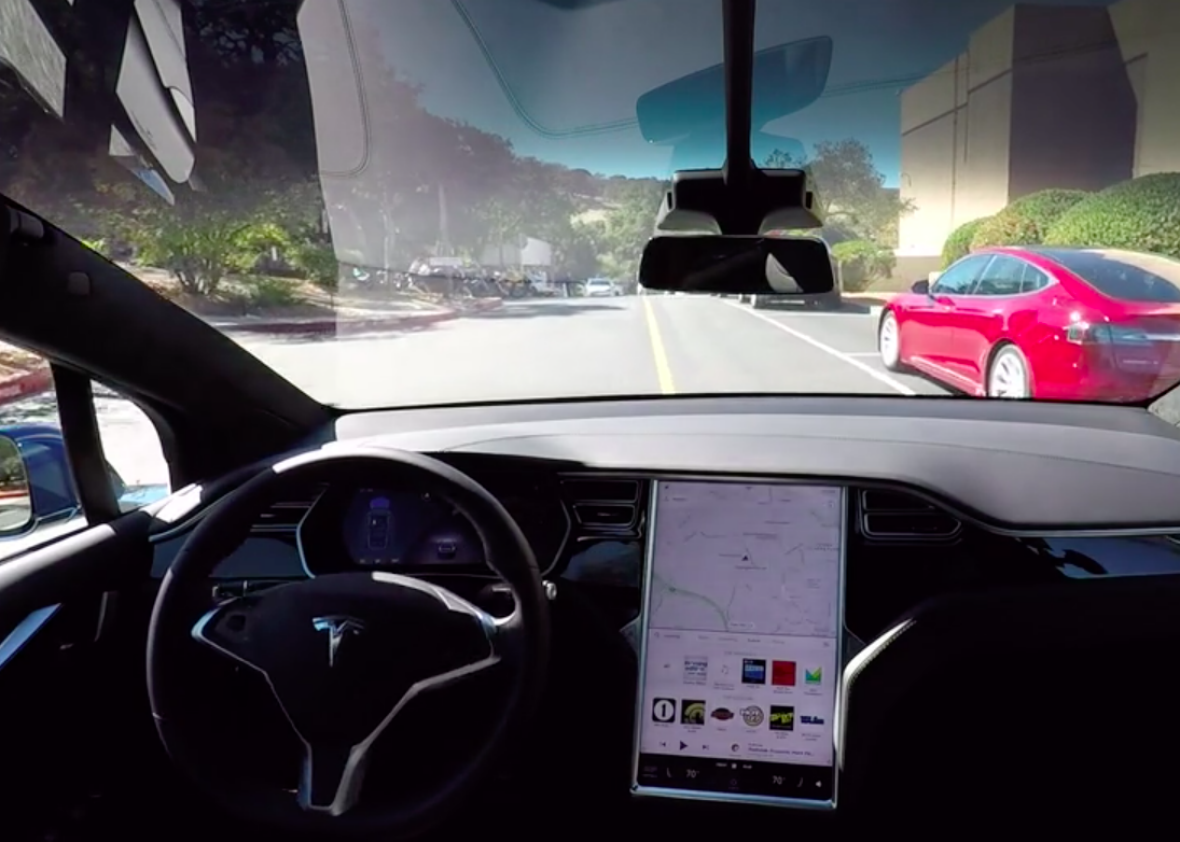Tesla announced Wednesday that cars in production now, including the company’s soon-to-be-released mass-market Model 3, can be equipped with the necessary hardware to enable fully autonomous driving at some point in the future. “The foundation is onboard to bring full autonomy,” CEO Elon Musk told the media in a phone call. When the software is ready, the car will achieve Level 5 autonomy, the company says. Need a pick-up? Tap the “Summon” button on your phone, and this car will come to you.
With that, Tesla appears to vault to the front of the pack in the race to produce self-driving cars. By the end of 2017, the company expects to demonstrate an autonomous cross-country trip from Los Angeles to New York. For now, we have to settle for this four-minute video showing a Model X on a short self-guided drive that culminates in the car parking itself. (There’s a human in the car to stay on the right side of the law, but he does not touch the wheel.)
The announcement is likely to frustrate both regulators and rival carmakers, some of whom believe Tesla has been cavalier in pushing self-driving tech into the marketplace. The fatal crash of a Florida man using the company’s autopilot feature had sparked a debate about the safety of the software, which the company insists is superior to human driving. My colleague Will Oremus evaluates those claims here. Speaking to reporters on Wednesday, Musk claimed that the new hardware-equipped Teslas will be at least twice as safe as human-driven cars.
There are, of course, caveats. The “Hardware 2,” which will add $8,000 to the purchase price, includes eight cameras, 12 “ultrasonic sensors,” and a forward-facing radar. But the autonomous tech won’t be turned on until Tesla can internally validate the software and get regulatory approval. It’s a shrewd move by Tesla, which could sell hundreds of thousands of cars on the promise of technical improvements that it hasn’t yet perfected and can’t turn on.
There’s precedent here; that’s the same way the company rolled out autopilot, which was unveiled as a software update to cars equipped with the required hardware. Full autonomy will function like a Hollywood robot uprising: When Tesla pushes the button, hundreds of thousands of cars will start driving themselves.
Don’t hold your breath for that. Sending 5,000-pound metal boxes careening empty through the streets is a paradigm shift that makes autopilot look like cruise control. (Both for the company, and for the federal government, which may have to refine its stance on that higher level of automation sooner than expected.) If Tesla isn’t even planning its autonomous cross-country drive until the end of next year, it will be a while longer until you can make yours.
More important than the timeline is that automation is moving forward in the private ownership model: When Tesla turns on its hardware, it will be activated in hundreds of thousands of private cars. That is not the “shared fleet” model that many experts have been hoping for, which has the potential to reduce traffic and parking in cities. (Drivers will only be able to use the company’s cars in a Tesla Network fleet, whose details will be announced next year.)
Instead, as cars drive unmanned between human destinations and cheap parking, the technology will instantly create more trips, more traffic, and more miles traveled. That situation is not a hypothetical anymore; it’s right there in the video.
